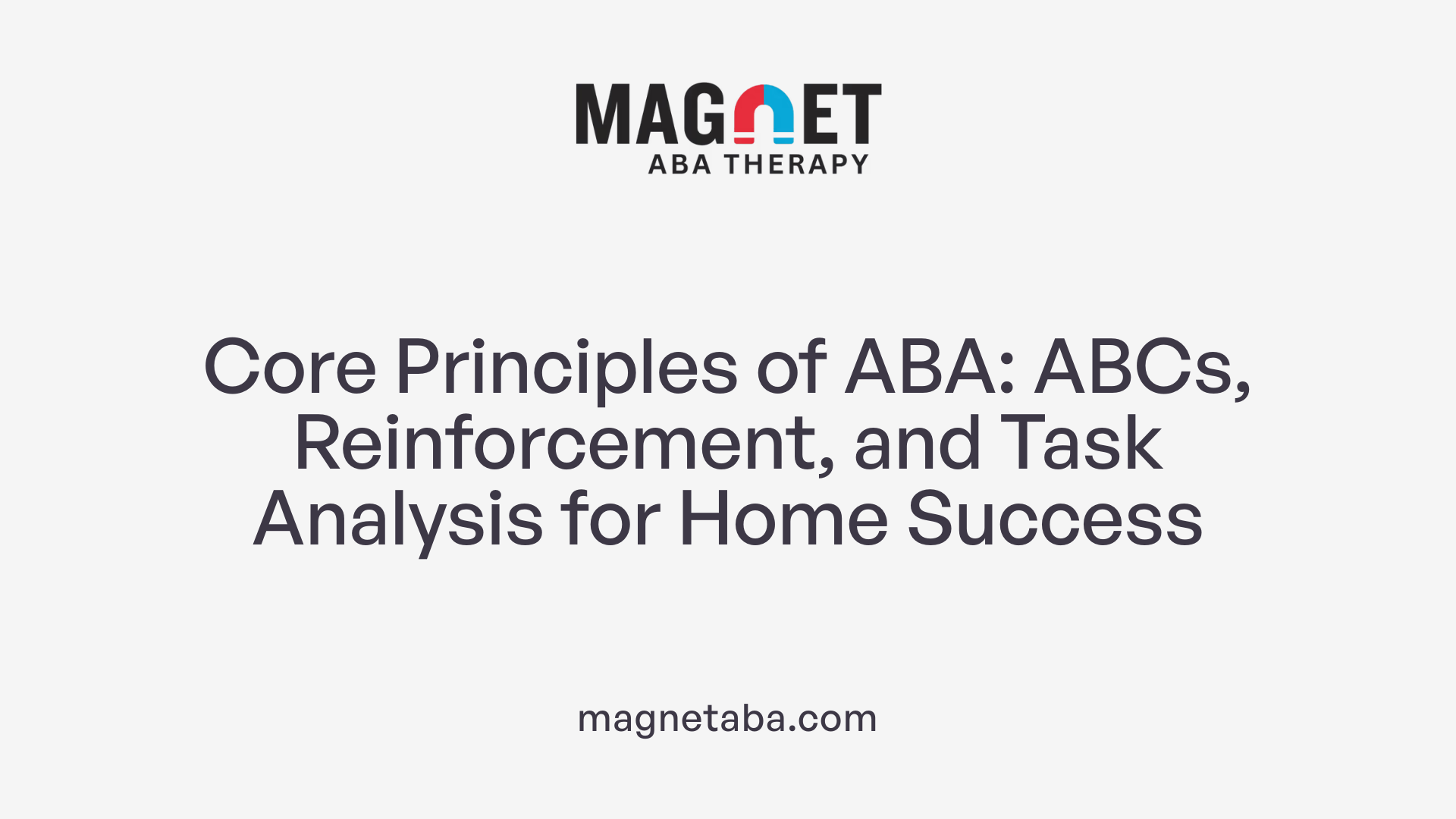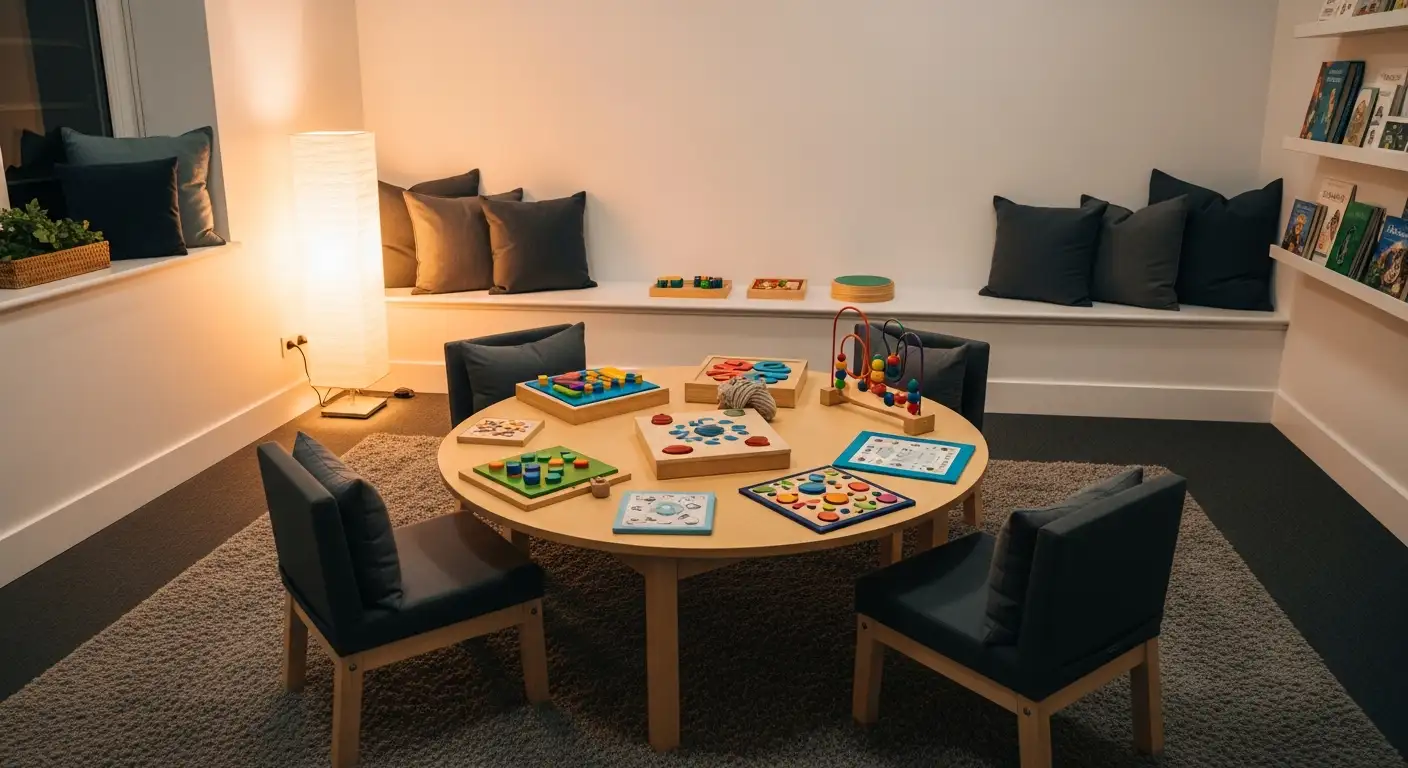Understanding the Role of Behavior Charts in Autism Support
Creating a functional behavior chart at home can be a transformative tool for families managing autism spectrum disorder (ASD). Rooted in the principles of Applied Behavior Analysis (ABA), these charts help track, reinforce, and shape behaviors, fostering independence and skill development. This article explores how to build an effective home behavior chart aligned with ABA therapy techniques, enabling caregivers to provide consistent, supportive interventions within the familiarity of home.
Foundations of Applied Behavior Analysis and Their Role in Home Interventions

What is Applied Behavior Analysis (ABA) therapy, and how does it help individuals with autism?
Applied Behavior Analysis (ABA) therapy is a scientifically supported treatment designed to improve meaningful behaviors and reduce those that may be harmful or interfere with learning. It is highly customized to each person's needs and often targets skills like communication, social interaction, daily living activities, and academic performance. ABA therapies use methods such as Discrete Trial Training (DTT), Pivotal Response Training (PRT), and others to teach new behaviors in natural environments including the home.
ABA focuses on teaching practical skills by breaking tasks into manageable steps and using positive reinforcement to encourage desired behaviors. Qualified professionals, like Board Certified Behavior Analysts (BCBAs), oversee these individualized programs, ensuring that interventions are data-driven and aim for steady progress. Families often see notable improvements when ABA interventions begin early and are consistent over time.
What are the key principles behind behavioral analysis used in autism therapy?
Behavioral analysis centers around the ABCs: Antecedent, Behavior, and Consequence. This framework helps to clearly identify what happens before a behavior (antecedent), the behavior itself, and what follows it (consequence). Recognizing these patterns is essential for shaping behavior effectively.
Positive reinforcement is a fundamental principle where a desirable stimulus is added following a behavior to increase its occurrence. Negative reinforcement, by contrast, involves removing something unpleasant to strengthen behavior. Techniques such as prompting, shaping, and fading guide skill acquisition gradually.
Task analysis is another vital tool; it involves breaking complex activities—like teeth brushing or hand washing—into smaller steps to be taught systematically. Additionally, Functional Behavior Assessments (FBA) are used to discover triggers of challenging behaviors, enabling tailored interventions.
How does ABA support individuals with autism in home settings?
ABA strategies are particularly effective in the home due to the familiar, consistent environment and increased opportunity for caregiver involvement. Parents and caregivers can implement simple ABA approaches such as using visual schedules, positive reinforcement, and consistent routines to support learning daily living skills and reduce challenging behaviors.
By focusing on one specific skill or behavior at a time, families can help children make steady progress. Visual aids, like picture cards, help clarify instructions and reduce anxiety. Families are encouraged to collect data on the child's progress to adjust approaches as necessary, often under the guidance of professionals like BCBAs.
Home-based ABA fosters independence, improves communication through techniques such as Functional Communication Training (FCT), and strengthens social engagement. This in-home involvement enhances generalization of learned skills across settings and daily life. Flexibility in scheduling and the comfort of home contribute to better adherence and outcomes.
| Aspect | Description | Example / Benefit |
|---|---|---|
| Definition & Goal | Improves helpful behaviors; reduces harmful behaviors | Enhanced communication and social skills |
| Behavioral Principles (ABCs) | Antecedent-Behavior-Consequence analysis to guide therapy | Identifies behavior triggers and reinforces positives |
| Positive Reinforcement | Adding a reward to increase behavior | Praise, tokens, or favorite activities |
| Task Analysis | Breaking complex skills into steps | Teaching tooth brushing in 18 steps |
| Home Implementation | Use of visual schedules, routine, and caregiver involvement | Familiar environment aids learning and generalization |
| Professional Oversight | Supervision by BCBAs and data-driven adjustments | Ensures individualized and effective interventions |
Who Delivers ABA Therapy and How Caregivers Can Collaborate at Home

Who provides ABA therapy for autism?
ABA therapy is delivered by a specialized team of professionals dedicated to supporting individuals with autism. The team typically includes Board Certified Behavior Analysts (BCBAs), who design and supervise treatment plans based on thorough assessments. Supporting them are Board Certified Assistant Behavior Analysts (BCaBAs), who operate under BCBA supervision, and Registered Behavior Technicians (RBTs), who conduct therapy sessions directly with clients. Additionally, paraprofessionals with targeted training may assist in therapy delivery.
These providers work within various settings such as autism treatment centers, clinics, and clients' homes. The therapy begins once an autism diagnosis is confirmed, and necessary insurance authorizations and functional behavior assessments are completed. This ensures that treatment plans are tailored to each individual's unique needs and challenges.
How is ABA therapy coordinated and individualized?
ABA therapy is highly individualized. BCBAs lead this process by analyzing assessment results and identifying specific behaviors to target. They customize goals and intervention strategies accordingly, ensuring a focused approach that may target communication, social skills, or daily living abilities.
The therapy is coordinated through regular collaboration among team members, including family and caregivers. Progress is continuously monitored using data collected during therapy sessions, allowing adjustments to strategies to best suit the client’s evolving needs.
How can caregivers collaborate in home implementation?
Caregiver involvement is crucial for maximizing the benefits of ABA therapy. At home, caregivers learn to apply foundational ABA techniques such as positive reinforcement, prompting, and task breakdown to support their loved one's progress.
Consistency and structure in the home environment enhance learning and generalization of skills. Caregivers use visual schedules and reinforce targeted behaviors in daily routines, fostering independence and improving social and communication abilities.
While caregivers can implement several strategies themselves, partnering with qualified professionals like BCBAs ensures that interventions are comprehensive and effective. This collaborative approach strengthens the therapeutic process and promotes meaningful, lasting improvements in the individual's life.
Designing an Effective Home Behavior Chart Using ABA Techniques

Incorporating ABC Data Collection
A successful home behavior chart starts with understanding the ABCs of ABA: Antecedent, Behavior, and Consequence. Recording what happens before (Antecedent) and after (Consequence) a behavior allows caregivers to identify triggers and outcomes. This information guides targeted interventions, ensuring the chart focuses on meaningful behaviors.
Using Positive Reinforcement Effectively
Positive reinforcement should be a central feature of your behavior chart. After observing a desired behavior, add something enjoyable like praise, stickers, or small rewards to encourage repetition. This strengthens the behavior by associating it with something positive, making progress more likely.
Breaking Behaviors and Skills into Manageable Steps (Task Analysis)
Complex behaviors are easier to teach and track when broken down into small, clear steps. For example, brushing teeth can be split into 18 distinct steps. Your chart can list these components separately, allowing you to reward and monitor progress on each part, making the learning process less overwhelming and more systematic.
Visual Aids and Schedules to Enhance Understanding
Incorporate visual supports such as pictures, icons, or a visual schedule within your behavior chart. These help children with autism process information and understand expectations more clearly. Visual prompts reduce anxiety and improve engagement, which supports smoother daily routines and skill-building.
By integrating these elements—ABC data collection, positive reinforcement, task analysis, and visual cues—you create a clear, structured, and motivating home behavior chart that fosters learning and supports independence.
Implementing Task Analysis and Chaining in Home Behavior Charts
Use of task analysis to break down complex behaviors
Task analysis is a fundamental teaching approach in ABA therapy, particularly effective for home implementation. It involves breaking down complex behaviors or daily living activities into smaller, manageable steps. This method helps children with autism focus on one simple task at a time, reducing overwhelm and making learning clearer and more achievable. For instance, a behavior chart can list each step of an activity like teeth brushing, helping the child track progress visually.
Chaining techniques (forward and backward) for skill building
Chaining is a method used to teach these step-by-step tasks by linking individual steps together. Forward chaining begins with teaching the first step of a task, gradually adding subsequent steps once mastery is achieved. Backward chaining starts with the last step first, encouraging completion of the task to build motivation. Both techniques foster independence and reinforce learning by incrementally increasing complexity. Incorporating chaining into behavior charts allows caregivers to celebrate small accomplishments and guide children through the entire activity over time.
Examples of daily living skills suitable for behavior charts
Common daily living skills adapted for home behavior charts include brushing teeth, hand washing, putting on pants, eating yogurt, folding towels, and doing laundry. For example, hand washing can be divided into five clear steps such as turning on the water, applying soap, scrubbing hands, rinsing, and drying. Visual aids paired with the chart, like pictures or icons, assist children in understanding and completing each individual step effectively. Using behavior charts based on task analysis and chaining helps children develop independence and confidence in managing everyday routines.
Striking Balance: Consistency, Data Tracking, and Flexibility in Home ABA Interventions
Why is consistent application and monitoring important in home ABA therapy?
Consistency is fundamental when applying ABA interventions at home. Using strategies like positive reinforcement and visual schedules regularly helps children with autism develop predictable routines that foster learning and confidence. Structured surroundings reduce anxiety and support steady progress by reinforcing desired behaviors systematically. Without consistent application, efforts may become fragmented, slowing skill acquisition and behavior improvement.
How does collecting data help track progress and adjust strategies?
Data collection is essential for understanding how well ABA techniques are working. By recording interventions and behavioral responses, caregivers can identify which methods encourage progress and which require adjustment. Tracking data provides objective insight into skill development and behavioral changes, enabling informed decisions on modifying approaches for greater effectiveness. This ongoing analysis ensures that interventions are tailored to the child’s evolving needs.
What role do patience and persistence play in long-term success?
Patience and persistence are crucial because ABA therapy outcomes often take time. Children may experience setbacks or slow progress, which requires caregivers to stay committed and maintain a positive approach. Consistent encouragement and willingness to adapt strategies help create an environment where learning can steadily advance. Enduring dedication turns early challenges into eventual success and increased independence for the child.
Combining these elements—consistency, data-driven monitoring, and patience—creates a balanced home ABA approach that maximizes benefits and supports sustainable improvement over time.
Maximizing Home-Based ABA Therapy Benefits Through Family Engagement
Advantages of Home Environment for Therapy
Implementing ABA therapy at home offers a familiar setting, which helps children with autism feel secure and comfortable, enhancing their readiness to learn. Home-based interventions enable children to practice new skills in their daily environment, promoting better generalization of behaviors.
Flexible Scheduling and Family Support
The flexibility of scheduling sessions at home allows families to integrate therapy into their routines without added stress. Parents and caregivers are actively involved, increasing their understanding of ABA techniques and reinforcing learning throughout the day.
Coordination with Professionals for Comprehensive Care
While caregivers can apply essential ABA strategies like prompting, shaping, and task analysis, collaboration with qualified professionals such as Board Certified Behavior Analysts (BCBAs) remains crucial. This partnership supports personalized interventions, progress monitoring, and adjustments to therapy plans for optimal outcomes.
Encouraging Communication Strategies
Home therapy effectively incorporates communication-focused methods like Functional Communication Training (FCT). Using visual prompts such as pictures and cards further assists children in expressing needs and reducing challenging behaviors. These tools empower families to support language development in practical, everyday contexts.
Bringing It All Together: Creating a Home Behavior Chart That Works
Developing a successful home behavior chart grounded in ABA principles empowers families to take an active role in supporting their child’s development. By understanding foundational ABA concepts such as the ABCs, utilizing positive reinforcement, implementing task analysis, and maintaining consistency with diligent data tracking, caregivers can create structured, yet flexible, behavior charts tailored to their child’s unique needs. Collaborating with qualified professionals ensures interventions are personalized and effective, while engaging the natural home environment maximizes learning and generalization of skills. With patience and commitment, a well-designed home behavior chart becomes a vital tool in promoting meaningful progress and lasting independence for children with autism.
References
- What are ABA Therapy Techniques and How are They Used?
- FSSA: Applied Behavioral Analysis therapy services
- ABA Therapy at Home: All You Need to Know
- Task Analysis in ABA Therapy: Strategies and Examples
- How To Implement Effective ABA Therapy Strategies At Home
- Applied Behavior Analysis (ABA)
- Applied Behavior Analysis (ABA)
- 6 Benefits of ABA Therapy for Children with Autism
- Applied Behavior Analysis (ABA)
- What Is Applied Behavior Analysis - Exploring ABA ...











